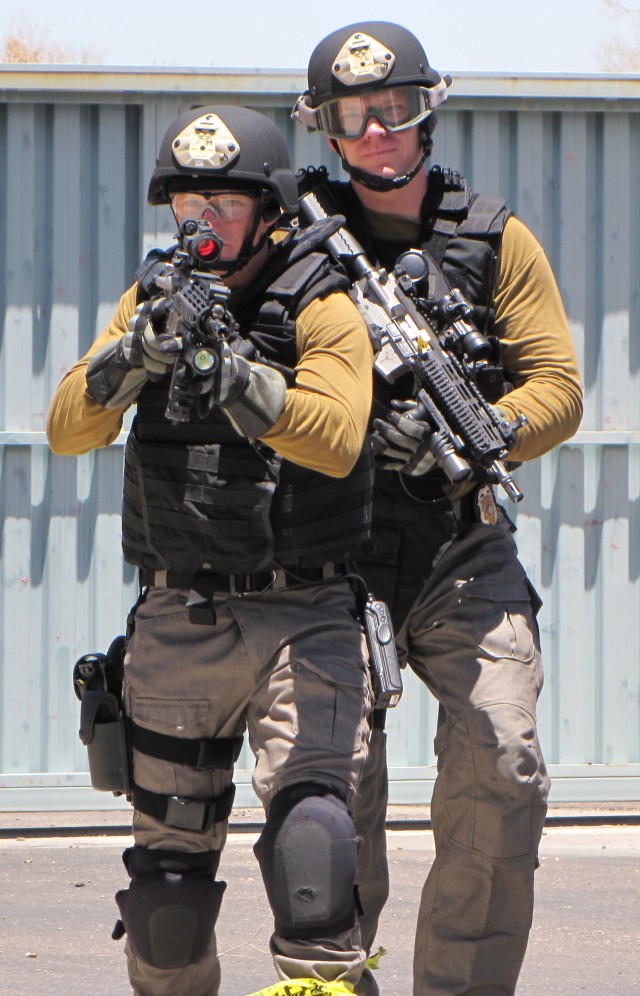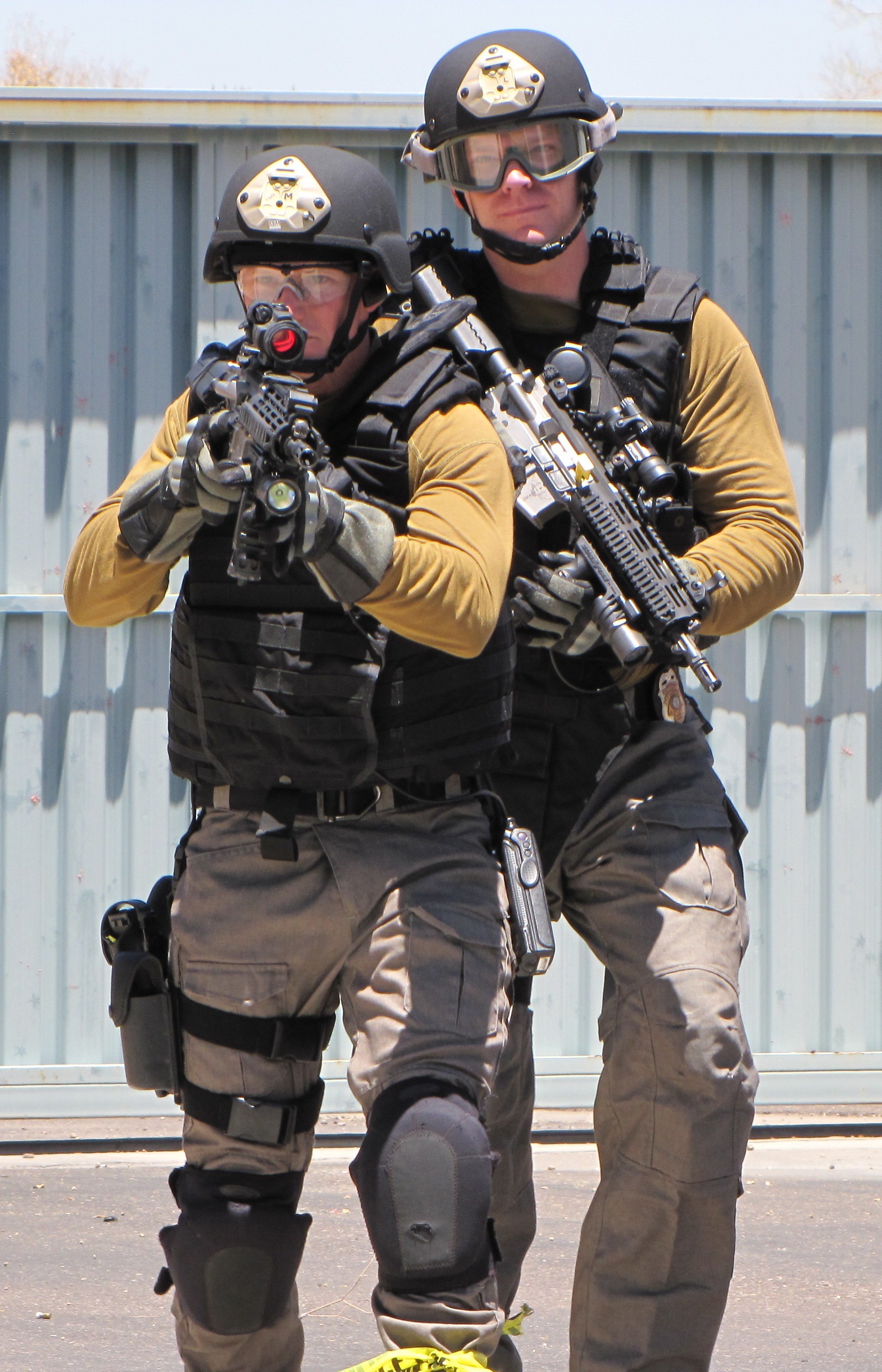NATICK, Mass. Aca,!" When you read the mission statement of the Natick Soldier Systems Center (NSSC), the workers at NSSC Aca,!A"conduct research, development, acquisition and sustainment to maximize combat effectiveness and survivability of freedom's defenders.Aca,!A?
At the Natick Soldier Research Development and Engineering Center (NSRDEC), the National Protection Center, works hand-in-hand with the Department of Homeland Security (DHS), Department of Justice and other agencies to protect tactical law enforcement officers when they are performing dangerous missions. The DHS Science and Technology Directorate funded Advanced Personal Protection System (APPS) program is one of many efforts to transfer military knowledge and technologies to law enforcement professionals. The APPS program assessed personal protection equipment developed for the Department of Defense for applicability to state and local first responders.
The APPS program held operational assessments around the country with tactical law enforcement (SWAT) teams. Supporting organizations were: Massachusetts STOP , Salt Lake City SWAT, Phoenix SAU, Orange County, FL SRT, Broward County, FL SWAT, and Cincinnati SWAT. Tactical officers at each location assessed the suitability and effectiveness of APPS technologies compared to their current equipment. Aca,!A"We have noticed some subtle differences in APPS between the climates throughout our testing area,Aca,!A? said Fred Chan, the NPC project officer for the APPS project. Aca,!A"The needs in Massachusetts are much different than the needs in Phoenix. We also have recognized a difference in law enforcement and military worn body armor.Aca,!A?
This type of teamwork makes a world of difference in saving lives. In November 2009, while executing a search warrant in New Bedford, Mass., a State Police special operations trooper was shot during a heavy exchange of gunfire. According to the officer in a Boston Globe report, the trooper didnAca,!a,,ct know he was hit until after the incident when he was checking his equipment. His body armor did its job. This is one of many examples of the technologies NSRDEC develops for the soldier that makes their way into the hands of law enforcement. Boots, gloves, helmets, eyewear, and clothing play a critical role in providing protection in high Aca,!" risk missions, and are addressed under collaborative programs such as APPS.
Aca,!A"The participation of the law enforcement agencies is critical to see what their needs are,Aca,!A? said Fred Chan, a mechanical engineer for the National Protection Center . Aca,!A"It is important to have the people who use the equipment clarify the differences between SoldiersAca,!a,,c needs and their own.Aca,!A?
The APPS program is funded by DHS Office of Science and Technology, TechSolutions program office (www.firstresponder.gov).
Transitioning the technology developed to protect Soldiers in combat to those who are committed to protect the Homeland, allows our nationAca,!a,,cs first responders to access the latest and greatest protective equipment and provides economies of scale by not having to conduct new developments.
At the end of the day, whether it is developing body armor for a Soldier on patrol in Kandahar or a SWAT team member executing a counter-terrorism raid in Connecticut, the goal is the sameAca,!A| we work together to achieve those goals.








Social Sharing